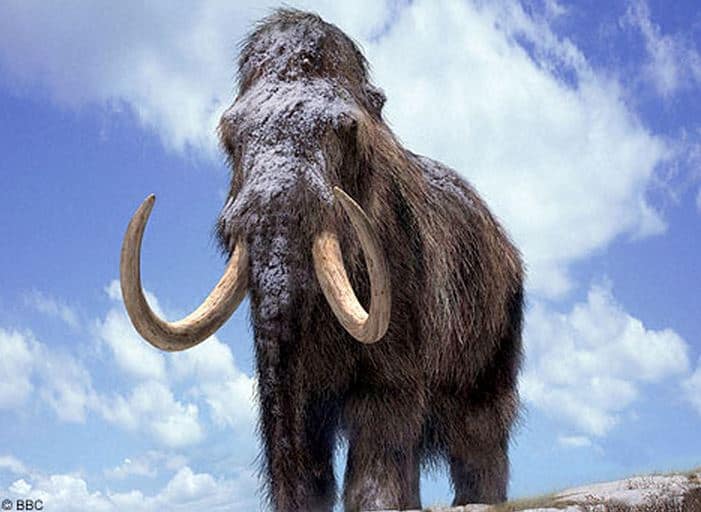After inserting 14 Woolly Mammoth genes into the DNA of a modern Asian Elephant, Harvard University geneticists say we are a step closer to eventually creating a living clone of the 6-ton prehistoric giant.
Study leader, George Church, a professor of genetics at Harvard University, and colleagues analyzed mammoth DNA from extremely well preserved specimens found on Wrangel Island in the Arctic Ocean, between the Chukchi Sea and East Siberian Sea.
From those specimens they managed to reproduce exact copies of fourteen mammoth genes. They then integrated those mammoth genes into a modern Asian elephant’s genome, where they functioned as normal DNA.

The tundra ecosystem could be revitalized with the re-introduction of the Woolly mammoth. (Image: Mammoth Island)
The research team used CRISPR (clustered regularly interspaced short palindromic repeat), a modern technique that allows them to precisely edit DNA, i.e. take out bits of modern elephant DNA and replace them with those from a mammoth.
Prof. Church said in an interview with the Sunday Times:
“We prioritised genes associated with cold resistance including hairiness, ear size, subcutaneous fat and, especially, haemoglobin (a red protein responsible for transporting oxygen in the blood). We now have functioning elephant cells with mammoth DNA in them.”
Modern Asian elephants are much more closely related to Woolly mammoths than African elephants are. They both share a common ancestor that existed 2.5 million to 5 million years ago.
During the last Ice Age, nearly all mammoths were killed off by human hunting. A few survived on Wrangel Island until about 3,300 years ago.
Three rival teams of scientists are currently racing to reconstruct a whole mammoth genome. When that is achieved, real mammoths could be recreated, so the theory goes.

George Church is Professor of Genetics at Harvard Medical School and Director of PersonalGenomes.org (Image: Harvard Medical School).
The science of de-extinction
Prof. Beth Shapiro, an ecologist and evolutionary biologist who works at the University of California, Santa Cruz, has published a new book this year – How to Clone a Mammoth: The Science of De-Extinction.
In the book Prof. Shapiro explains that extinct species like passenger pigeons and mammoths could, with some help from scientists, make a comeback.
A well-known pioneer in DNA research, Prof. Shapiro walks the reader through the amazing and controversial process of de-extinction.
De-extinction, also known as resurrection biology or species revivalism, is the process of creating an organism which is either a member of or resembles an extinct species, or breeding populations of these organisms.
According to Princeton University Press, Prof. Shapiro’s new book covers several fascinating aspects of de-extinction “From deciding which species should be restored, to sequencing their genomes, to anticipating how revived populations might be overseen in the wild, Shapiro vividly explores the extraordinary cutting-edge science that is being used–today–to resurrect the past.”
The book also discusses the ethical challenges and practical benefits of reviving extinct species.
Current ecosystems which are not thriving because key species have become extinct could be revitalized or stabilized if those species could be brought back, Prof. Shapiro believes. “Elephants with genes modified to express mammoth traits could expand into the Arctic, re-establishing lost productivity to the tundra ecosystem,” she explains.
Creating a mammoth from the Asian elephant
In a 2014 lecture quoted by the Harvard Gazette, Prof. Church explained that although the Woolly mammoth and Asian elephants are closely related, they have some important differences, the main one being cold tolerance.
To increase that trait in Asian elephants so that they could live in Arctic conditions, several features would need to be changed, such as adding a thick layer of fat, a double fur coat, and reducing ear size to cut heat loss.
Video – Prof. Shapiro talks about de-extinction
